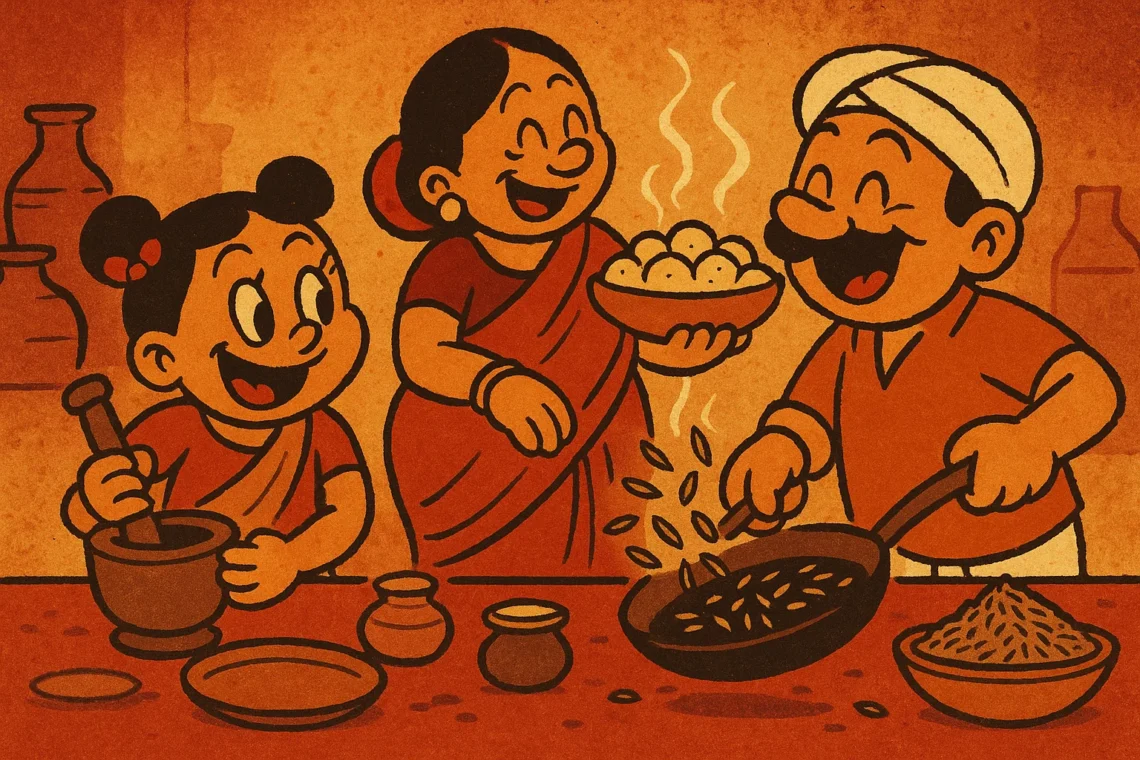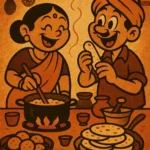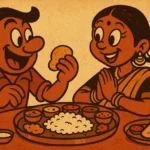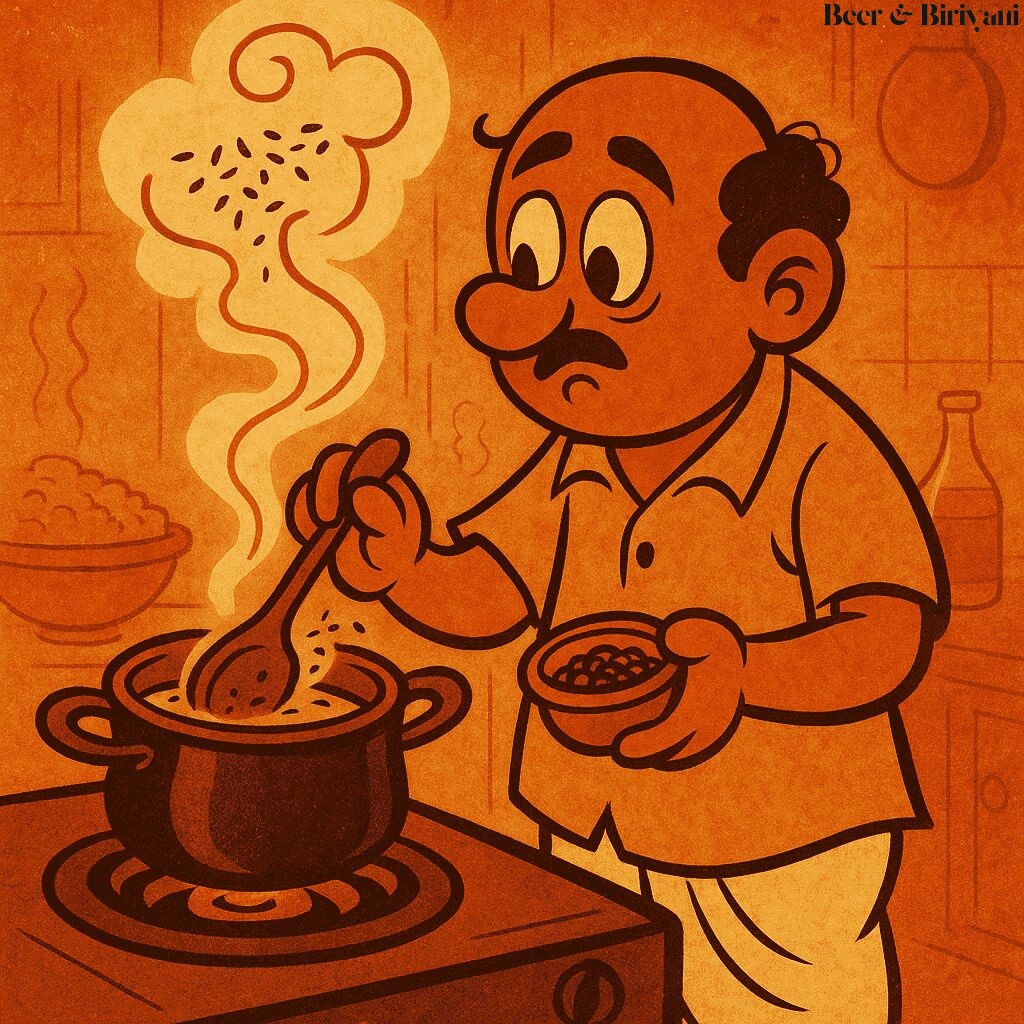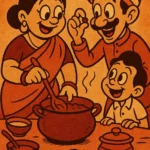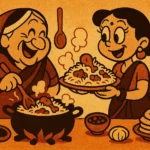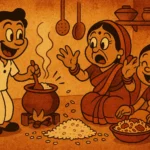There’s a little moment in the Indian kitchen, right at the beginning of cooking, when the oil warms, the pan waits, and someone reaches for the jeera. Not onions. Not garlic. Just a pinch of those small, brown, slightly curved cumin seeds. They go into the oil with a soft sizzle—and just like that, the kitchen starts to smell like intention. Like something is about to happen. And honestly, in my house, something always does. Because there is jeera in everything.
I mean it. My mom put jeera in sabzis, dals, rice, chutneys, even the occasional raita. There’s jeera in my khichdi, in my aloo, in the tadka for moong dal, and sometimes, mysteriously, in the tea masala. It’s the spice equivalent of a family member who shows up uninvited but makes themselves useful, so you never complain. It doesn’t shout. It doesn’t demand. But it’s always there, humming in the background of the dish, grounding the sharper notes, anchoring the drama of red chilies and hing with its calm, earthy depth.
The Quiet Backbone
Growing up in Mumbai, I never gave jeera much thought. It was just… there. The kitchen always had a small tin of it, somewhere near the salt, always slightly oily at the edges from daily use. It wasn’t a glamorous spice like saffron. It wasn’t fiery like chili. It wasn’t even indulgent like ghee. But if it went missing, the food would start tasting like a version of itself with the volume turned down.
My mom never used measuring spoons for jeera. She used instinct. A quick pinch between fingers, a flick into hot oil, a brief pause for the sizzle. She could tell by sound whether it had bloomed right. And if it burned—well, you started over. There was no rescuing burnt jeera. It would sulk through the entire dish, reminding you of your mistake. That’s how I learned respect.
Where It Comes From (and Why It Matters)
Jeera has been around. Native to the Middle East and South Asia, cumin’s been used in everything from Egyptian mummification rituals to Roman bread. But it’s in the Indian kitchen where it truly found its home. Across states, languages, and traditions, it plays a dozen different roles. It’s in Gujarati kadhi, Rajasthani gatte, South Indian rasam powder, Kashmiri spice blends, Punjabi chole—the list doesn’t end. Sometimes it’s dry-roasted and crushed. Sometimes it’s whole and crackling. Sometimes it’s just quietly present, doing the heavy lifting without asking for applause.
It’s not just flavor, either. Ask any desi mother or grandmother, and you’ll hear about jeera’s health benefits. It aids digestion. It cools the system. It’s added to warm water in the mornings, to postpartum food, to toddler khichdi. It’s one of those spices that lives not just in recipes but in rituals.
Jeera in Exile
When I moved to the U.S., my first kitchen in Austin had four things: rice, toor dal, turmeric, and jeera. Everything else could wait. Jeera was non-negotiable. It became my taste of continuity—something that traveled easily, packed well, and could fix even the blandest bowl of lentils. I once made a whole pot of dal for a friend who said it tasted “like soup, but emotionally stable.” That, I think, was the jeera talking.
I’ve found jeera in unexpected places, too. In taco seasoning. In Middle Eastern spice mixes. Even in Texan chili recipes. But none of them hit the same way as that first sizzle in hot oil. That sound is a calling card. That smell? That’s the opening line to a hundred dinners and a thousand memories.
Roast It, Crush It, Love It
Want to get fancy? Try roasting jeera on a dry tawa until it darkens slightly and releases that toasted, almost smoky aroma. Then grind it into a powder and sprinkle it on curd, fruit chaat, or lemonade. Yes—jal jeera. Cool, spicy, tangy, and somehow exactly what you need when the power’s out and the fan’s not helping.
Roasted jeera powder is also how we pretended to be sophisticated while growing up. One shake on top of cucumber raita and suddenly your lunch felt like a hotel buffet. It was seasoning and elevation—without being obvious. Like the good-natured uncle who doesn’t say much at weddings but always knows how to make the kids laugh.
Still the Default
These days, I have shelves of spices. Smoked paprika, za’atar, sumac. But when I’m tired, homesick, or cooking from muscle memory, my hand still reaches for jeera. It’s a reflex. A ritual. A reminder that some flavors don’t just taste like home—they are home.
So yes, there’s jeera in everything I make. Not because I’m lazy or unimaginative. But because I know, deep down, that every dish needs something to hold it together. Something grounding. Something humble. Something like jeera.
And really, isn’t that the whole point of a good kitchen? A few things you can count on. A few smells that make you pause. A few spices that feel like they’ve always known you.
Born in Mumbai, now stir-frying feelings in Texas. Writes about food, memory, and the messy magic in between — mostly to stay hungry, sometimes just to stay sane.

